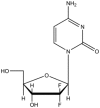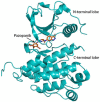Managing sarcoma: where have we come from and where are we going?
- PMID: 28974986
- PMCID: PMC5613860
- DOI: 10.1177/1758834017728927
Managing sarcoma: where have we come from and where are we going?
Abstract
Sarcomas are a heterogeneous group of neoplasms of mesenchymal origin. Approximately 80% arise from soft tissue and 20% originate from bone. To date more than 100 sarcoma subtypes have been identified and they vary in molecular characteristics, pathology, clinical presentation and response to treatment. While sarcomas represent <1% of adult cancers, they account for approximately 21% of paediatric malignancies and thus pose some of the greatest risks of mortality and morbidity in children and young adults. Metastases occur in one-third of all patients and approximately 10-20% of sarcomas recur locally. Surgery in combination with preoperative and postoperative therapies is the primary treatment for localized sarcoma tumours and is the most promising curative possibility. Metastasized sarcomas, on the other hand, are treated primarily with single-agent or combination chemotherapy, but this rarely leads to a complete and robust response and often becomes a palliative form of treatment. The heterogeneity of sarcomas results in variable responses to current generalized treatment strategies. In light of this and the lack of curative strategies for metastatic and unresectable sarcomas, there is a need for novel subtype-specific treatment strategies. With the more recent understanding of the molecular mechanisms underlying the pathogenesis of some of these tumours, the treatment of sarcoma subtypes with targeted therapies is a rapidly evolving field. This review discusses the current management of sarcomas as well as promising new therapies that are currently underway in clinical trials.
Keywords: chemotherapy; current management; new therapies; radiation therapy; sarcoma; surgery; targeted therapies.
Conflict of interest statement
Conflict of interest statement: The authors declare that there is no conflict of interest.
Figures












References
-
- Skubitz KM, D’Adamo DR. Sarcoma. Mayo Clin Proc 2007; 82: 1409–1432. - PubMed
-
- Lye KL, Nordin N, Vidyadaran S, et al. Mesenchymal stem cells: from stem cells to sarcomas. Cell Biol Int 2016; 40: 610–618. - PubMed
-
- Teicher BA. Searching for molecular targets in sarcoma. Biochem Pharmacol 2012; 84: 1–10. - PubMed
-
- Helman LJ, Meltzer P. Mechanisms of sarcoma development. Nat Rev Cancer 2003; 3: 685–694. - PubMed
Publication types
LinkOut - more resources
Full Text Sources
Other Literature Sources

